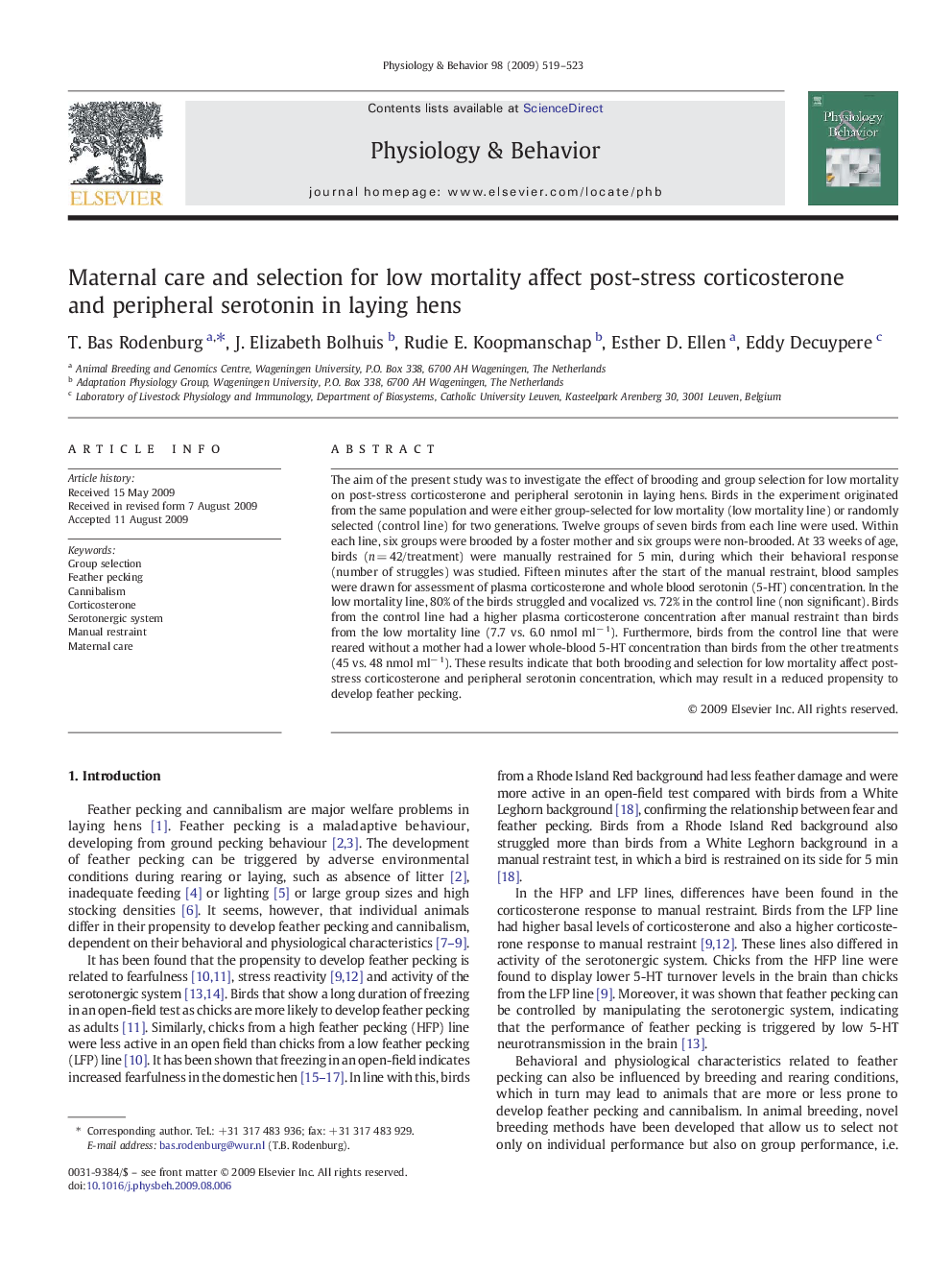| Article ID | Journal | Published Year | Pages | File Type |
|---|---|---|---|---|
| 2845295 | Physiology & Behavior | 2009 | 5 Pages |
The aim of the present study was to investigate the effect of brooding and group selection for low mortality on post-stress corticosterone and peripheral serotonin in laying hens. Birds in the experiment originated from the same population and were either group-selected for low mortality (low mortality line) or randomly selected (control line) for two generations. Twelve groups of seven birds from each line were used. Within each line, six groups were brooded by a foster mother and six groups were non-brooded. At 33 weeks of age, birds (n = 42/treatment) were manually restrained for 5 min, during which their behavioral response (number of struggles) was studied. Fifteen minutes after the start of the manual restraint, blood samples were drawn for assessment of plasma corticosterone and whole blood serotonin (5-HT) concentration. In the low mortality line, 80% of the birds struggled and vocalized vs. 72% in the control line (non significant). Birds from the control line had a higher plasma corticosterone concentration after manual restraint than birds from the low mortality line (7.7 vs. 6.0 nmol ml− 1). Furthermore, birds from the control line that were reared without a mother had a lower whole-blood 5-HT concentration than birds from the other treatments (45 vs. 48 nmol ml− 1). These results indicate that both brooding and selection for low mortality affect post-stress corticosterone and peripheral serotonin concentration, which may result in a reduced propensity to develop feather pecking.
